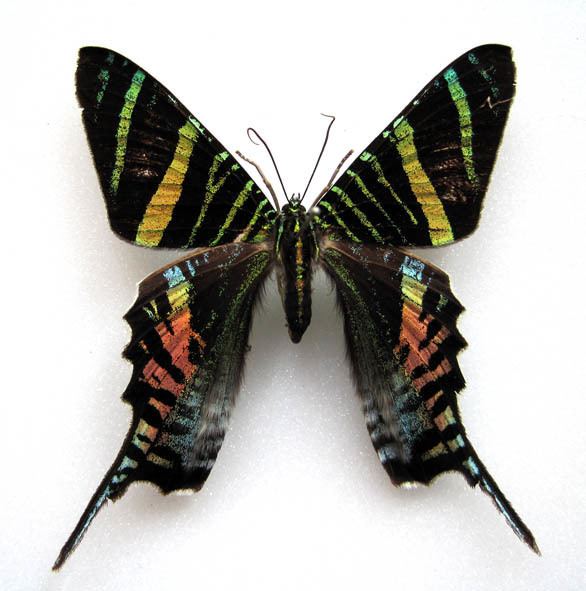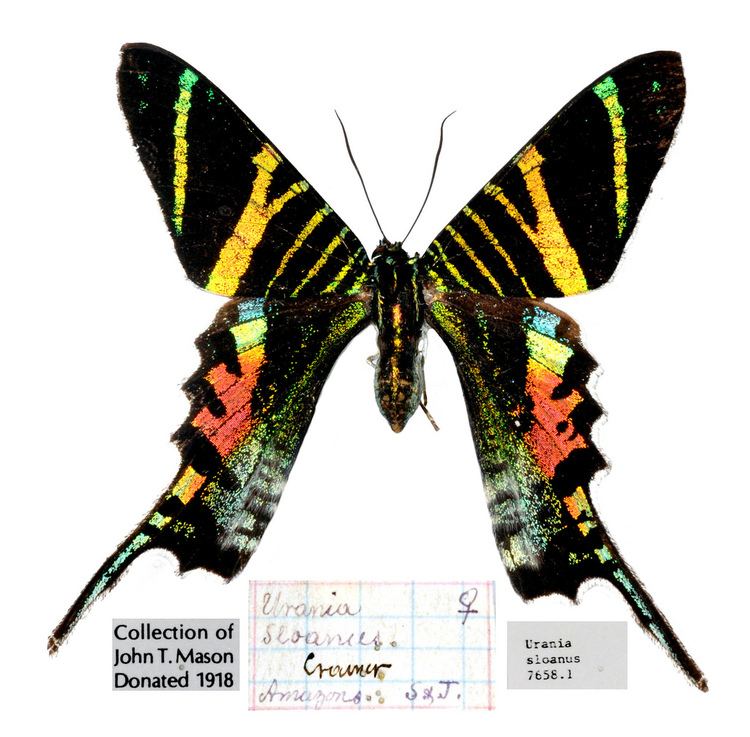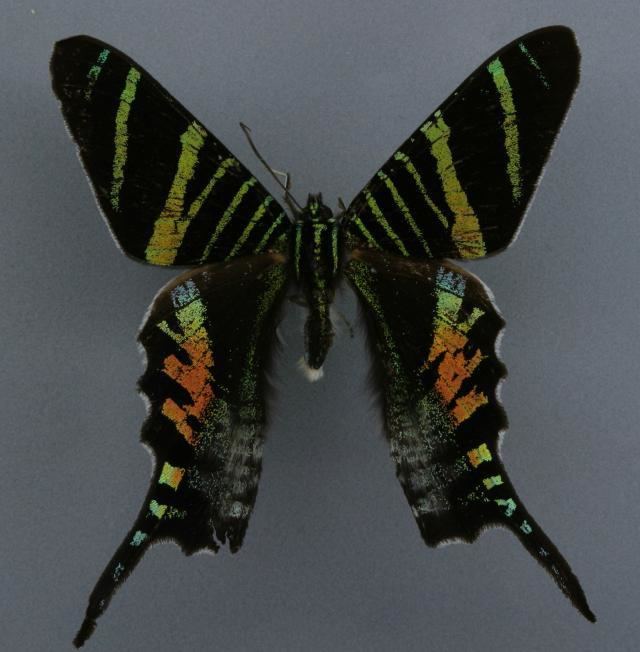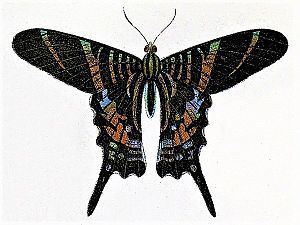Scientific name Urania sloanus | Rank Species | |
 | ||
Similar Urania, Uraniinae, Omphalea, Uraniidae, Urania leilus | ||
Urania sloanus (Sloane's urania) was a moth of the Uraniidae family endemic to Jamaica. It was last reported in 1894 or 1895, but possibly surviving until at least 1908.
Contents

The specific epithet sloanus honours Sir Hans Sloane (1660–1753), an English collector whose collection became the foundation of the British Museum.

Description

This extinct Urania species was black with iridescent red, blue and green markings. The iridescent parts of the wings do not have pigment; as determined by optical analysis on the species Urania fulgens belonging to the same genus, the color originates from refraction of light by the ribbon-like scales covering the moth's wings.

Urania sloanus is considered "the most spectacular Urania species". As most species of the subfamily Uraniinae, it was a day flying moth while most moths are active at night; its bright colors advertised, as a warning, the fact that it was also toxic.
Extinction

Based on current knowledge of extant uraniine species, it is likely that Sloane's urania migrated between patches of host plants, after population explosions locally defoliated them. This probably required relatively large, intact areas of lowland forest.

Habitat loss when Jamaica's lowland rainforests were cleared and converted to agricultural land during the colonial era may have contributed to its extinction, although large parts of primary forest still remain. Thus, the more probable answer to its extinction would be that the moth population "crashed below a sustainable level, perhaps a victim of loss of one of its larval foodplants" such as the toxic Omphalea triandra L. and O. diandra. Like other members of the genus Urania, periodic swarms of moths were separated by years of great scarcity.
